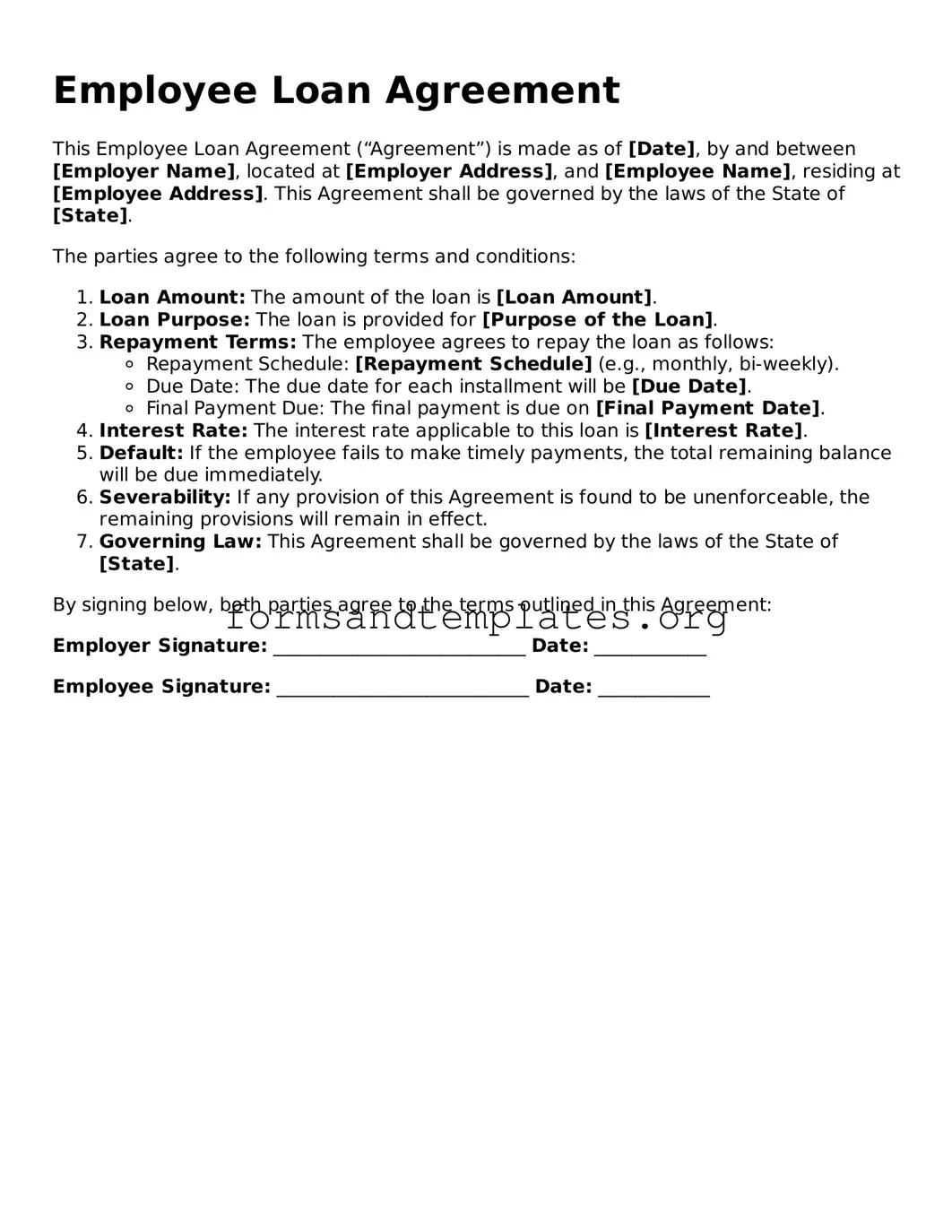What is an Employee Loan Agreement?
An Employee Loan Agreement is a formal document that outlines the terms and conditions under which an employer provides a loan to an employee. It specifies the loan amount, repayment schedule, interest rate (if applicable), and other relevant details to ensure clarity and protect both parties.
Who can apply for an Employee Loan?
Typically, any employee who meets the eligibility criteria set by the employer can apply for a loan. Criteria may include factors such as length of employment, job performance, and financial need. Employers may also have specific policies regarding which positions are eligible for loans.
To complete the Employee Loan Agreement form, you will generally need to provide:
-
Your personal information (name, employee ID, etc.)
-
The loan amount requested
-
The purpose of the loan
-
Your proposed repayment schedule
-
Any other required documentation, such as proof of income or financial need
What are the repayment terms?
Repayment terms vary based on the agreement. Typically, they include:
-
The total loan amount
-
The repayment period (e.g., months or years)
-
The frequency of payments (e.g., monthly, bi-weekly)
-
The interest rate, if applicable
It is crucial to understand these terms before signing the agreement to avoid any misunderstandings later.
Can the loan be forgiven?
Loan forgiveness depends on the specific terms outlined in the Employee Loan Agreement. Some employers may offer forgiveness if certain conditions are met, such as continued employment for a specified duration or achieving specific performance goals. Always clarify this with your employer before proceeding.
What happens if I cannot repay the loan?
If you find yourself unable to repay the loan, it is essential to communicate with your employer as soon as possible. The agreement may outline consequences for non-repayment, which could include wage deductions or legal action. Open communication can help find a solution, such as restructuring the repayment plan.
Is there an interest rate on the loan?
Interest rates are not always applicable but may be included in the agreement. If there is an interest rate, it should be clearly stated in the document. Understanding whether the loan is interest-free or has a specific rate will help you plan your finances accordingly.
How is the loan amount determined?
The loan amount is typically determined based on several factors, including:
-
Your financial needs
-
Your salary and ability to repay
-
Company policies regarding loan limits
Employers may also consider your length of service and overall performance when deciding the loan amount.
Can I apply for multiple loans?
Applying for multiple loans may be possible, but it often depends on company policy. Employers may limit the number of loans an employee can have at one time to manage risk. Always check with your HR department or review the company policy for specifics.
If you need help completing the Employee Loan Agreement form, consider reaching out to your HR department. They can provide guidance on the application process and clarify any terms or conditions you may not understand. Additionally, some employers may offer financial counseling services to assist employees.
